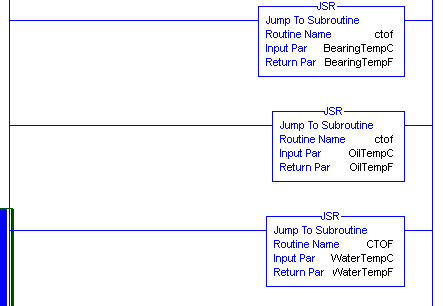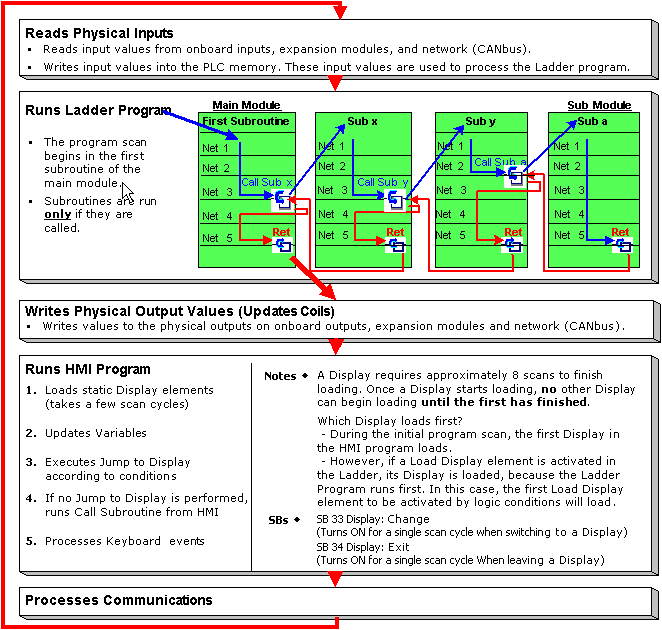
Well.The MicroLogix 1400 has a Locked Ladder File (View Disable) feature that allows a ladder file to be protected from viewing if a user does not have the correct password. It really is just a simple goto loop that is needed, but things got complicated with object orientated programming.

Otherwise it picks a target pixel and passes that info to the particle drawing subroutine which uses it as the center point. So my zonechecker function rolls a zone, checks it for targets, and if there are none, it needs to kill that zone and restart itself. But if there are no available pixels even for the smallest particles, I need to remove the zone from the list (each zone is actually a set of corner coordinates saved in wave form) so as not to roll it again. If the available pixels cant accomodate the particle, I simply shrink the particle to match. The simplest and most logical solution I could think of, was to check each zone for available target pixels based on the incoming particle, something which needs to be done anyhow for targetting.

Thing is, with the zones it is now more likely to fill the space (there is logic to avoid overlapping the particles) and this would break my code. When I generate a particle, I then "roll" for a zone, so as to avoid iterating over the entire image. In order to optimize the speed (it was real slow in the first build), I divide each image array into zones. By localized, I mean the particle centers between the two images are identical. Each iteration of the program produces two "micrographs" one with "vesicles", and another with matching "protein" signatures for a specifiéd percent of those vesicles, along with additional nonlocalized signatures representing non-specific binding. The data consist of randomly placed 2D gaussian profiles (with noise) generated randomly from within the parameter ranges. The user inputs a number of parameters (the list keeps growing), and the program gets to work generating data. I made a program (nearly finished, will upload it soon) which generates synthetic data of sub-diffraction micrograph images in order to test some of our private lab software.
#Logix pro subroutine how to
Hmm not sure how to explain it better than thru implementation details. For each instance of the function, a separate block of memory is allocated in which that function exists and plays out its life.
#Logix pro subroutine code
When you actually run the code there is no such thing as variable names or strings.ħ41 is saying that when a function is called recursively, the second and any following instances of that function operate independently of the the preceding instances of that function. It's simply an agreement between you and the Igor compiler. Variable names exist so Igor knows what location you're referring to when you're coding, but every function can use whatever names it wants. The exceptions are global variables, of course.Īlso, remember that local variables and strings do not have names - they're simply tiny regions of memory somewhere in your computer's memory. When you actually run the code there is no such thing as variable names or string names. In other words, functions are never interleaved.Īlso, remember that local variables and strings do not have names - they're simply tiny regions of memory somewhere in your computer's memory.

Perhaps it would help to realize that, when you call a function in Igor, Igor immediately starts running that function, and will only return to the original function when that function finishes. What you're trying to do, a function calling itself, is known as recursion, and it is an accepted technique in every programming language I've used. I'm not sure where you're stuck with your scheme. Sorry if this is a simple question, I havent programmed since my days in C++ and we never got to object orientated. Is this even the way to go about with this, or are there more clever solutions? I already keep most of my variables as waves as it is to avoid the whole local/global var mashup. This would be a simple goto statement, but I guess those died with the dinosaurs. Obviously if I need to change more than one, I should use pass by reference, but what about when it (possibly) calls itself again? Can it pass those same parameters back to itself, even after it has changed them? The problem is the subroutine needs to be passed some parameters from the main function. Sat, - 03:38 am I have a subroutine (or function section) that needs to make a check and if its true, change some data and restart itself.

Wide-Angle Neutron Spin Echo Spectroscopy.


 0 kommentar(er)
0 kommentar(er)
